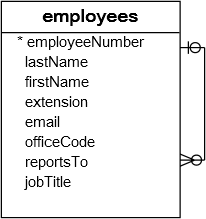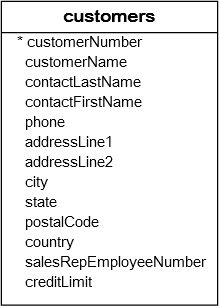A2-02-29.DML-MySQL DELETE
转载自:http://www.mysqltutorial.org/mysql-delete-statement.aspx
MySQL DELETE
Summary: in this tutorial, you will learn how to use the MySQL DELETE statement to delete data from a single table.
Introduction to MySQL DELETE statement
To delete data from a table, you use the MySQL DELETE statement. The following illustrates the syntax of the DELETE statement:
|
1
2
|
DELETE FROM table_name
WHERE condition;
|
In this statement:
- First, specify the table from which you delete data.
- Second, use a condition to specify which rows to delete in the
WHEREclause. If the row matches the condition, it will be deleted.
Notice that the WHERE clause is optional. If you omit the WHERE clause, the DELETE statement will delete all rows in the table.
Besides deleting data from a table, the DELETE statement returns the number of rows deleted.
To delete data from multiple tables using a single DELETE statement, you use the DELETE JOIN statement which we will cover in the next tutorial.
To delete all rows in a table without the need of knowing how many rows deleted, you should use the TRUNCATE TABLE statement to get a better performance.
For a table that has a foreign key constraint, when you delete rows from the parent table, the rows in the child table will be deleted automatically by using the ON DELETE CASCADE option.
MySQL DELETE examples
We will use the employees table in the sample database for the demonstration.

DELETE statements in the next section.Suppose you want to delete employees whose officeNumber is 4, you use the DELETE statement with the WHERE clause as the following query:
|
1
2
3
|
DELETE FROM employees
WHERE
officeCode = 4;
|
To delete all rows from the employees table, you use the DELETE statement without the WHERE clause as follows:
|
1
|
DELETE FROM employees;
|
All rows in the employees table deleted.
MySQL DELETE and LIMIT clause
If you want to limit the number of rows to be deleted, you use the LIMIT clause as follows:
|
1
2
|
DELETE FROM table
LIMIT row_count;
|
Note that the order of rows in a table is unspecified, therefore, when you use the LIMIT clause, you should always use the ORDER BY clause.
|
1
2
3
|
DELETE FROM table_name
ORDER BY c1, c2, ...
LIMIT row_count;
|
Consider the following customers table in the sample database:

For example, the following statement sorts customers by customer’s names alphabetically and deletes the first 10 customers:
|
1
2
3
|
DELETE FROM customers
ORDER BY customerName
LIMIT 10;
|
Similarly, the following DELETE statement selects customers in France, sorts them by credit limit in ascending order, and deletes the first 5 customers:
|
1
2
3
4
|
DELETE FROM customers
WHERE country = 'France'
ORDER BY creditLimit
LIMIT 5;
|
In this tutorial, you have learned how to use the MySQL DELETE statement to delete data from a table.


